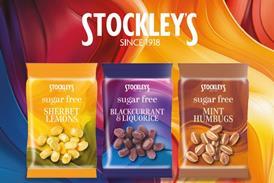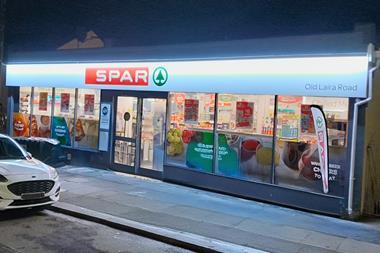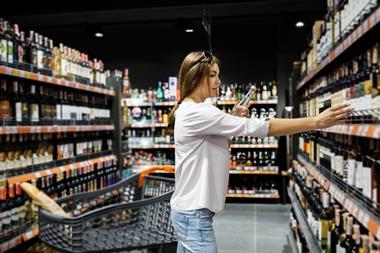The gloves are off as two top indies argue whether small stores should copy the multiples’ style, or stick to their differences
With the multiples focusing increasingly on the convenience sector, is it time for independent retailers to start playing them at their own game and begin employing some of the big boys’ tactics? But if retailers start doing that, could they risk losing what sets them apart from the competition in the first place? And can a retailer be truly independent if they become replicas of the multiples that have encroached on their territory so much?
Some may argue it’s simply a case of ‘if you can’t beat them, join them’, while others may believe the multiples and their practices should be avoided at all costs. Here two of our C-Store Champions fight their corner in the Big Debate.
Arjan Mehr

Never afraid to voice his opinions, Arjan was one of the first retailers to recognise the potential of food to go and has built his Londis Bracknell store around it. He believes retailers should use every tool at their disposal, and that includes those of the mults.
Sylvia Winter

Sylvia’s Post Office and Village Stores in Creaton, Northamptonshire, is the very definition of a community store. She and her husband David provide everything that their customers could possibly need, with a focus on a personal service that a supermarket just can’t match.
MANAGEMENT: backroom or shop floor?
Arjan: “In my opinion, a lot of convenience stores are poor at delegation. I see a lot of stores where staff are merely viewed as shelf-stackers and the owner or manager is serving customers behind the till. I understand that some stores simply don’t have the staff, but in multiples the managers are in the office, looking to grow the business. I know staffing is expensive, but if you’re actively growing the business it will pay for those additional members of staff.”
Sylvia: “It can be difficult to let go of the reins, but it’s important to keep your finger on the pulse of what’s going on in the store, including the shop floor and customers. It’s that interaction and knowledge that could possibly save a lost sale by recommending a similar product or replacement. I doubt the staff on the shop floor in a multiple can do that, and if the manager isn’t around the customer will just forgo the purchase and possibly shop somewhere else.”
PRESENTATION & PROMOTIONS
Arjan: “As soon as you walk into a multiple store, there is a sense of value perception through the promotions and their communication. Although independent retailers are offering promotions, they can learn from the multiples about how to communicate them to customers.”
Sylvia: “POS is all well and good, but nothing beats actually interacting with a customer and telling them about a deal, rather than a massive poster in the store.”
Arjan: “The multiples know how to execute and communicate a promotion on a national and local level, though. If a retailer could emulate just some of the multiples’ promotional tactics they would benefit.”
Sylvia: “Those promotions are very strict, as is ranging. I have control over everything in the store. An independent has flexibility, plus given the fact that promotions in the multiples create a massive amount of food waste, should we be adding to that?”
INVESTING IN TECHNOLOGY
Arjan: “Independent retailers are way behind when it comes to technology and utilising the data at their fingertips. Take contactless payment, for example. The maximum amount you can purchase on that is £25, which pretty much covers every transaction in a store. If a retailer had this facility, they could serve customers quicker, pay less in bank charges and debit card fees. But as it stands, a lot of independents still don’t have epos, while the multiples are way ahead.”
Sylvia: “A lot of independent retailers have Chip and PIN machines as well as epos, but what sets us apart from the multiples is we’ll take the time to show people how to use them. We have a lot of elderly customers and sometimes they get panicked about using them. In a multiple, it’s a rush and there’s too much pressure if they make a mistake. Plus, why would you want to get people out of the store quicker? For some, we are an important social interaction.”
COMMUNITY ENGAGEMENT & SERVICE
Sylvia: “The one area that the multiples can’t touch independent retailers on is community engagement and service. We know most of our customers by name and we go above and beyond to help them.”
Arjan: “Community engagement isn’t necessarily the number one requirement for a customer visiting a store - not anymore.”
Sylvia: “There was a recent housing study carried out in Creaton that asked residents to list the most important amenity in the area and 91% said that it was the local shop. I doubt anyone in any village, town or city would ever list their large supermarket.”
Arjan: “I believe that lessons of professionalism and value perception that multiples can offer us more than make up for any failings in community engagement. And most independent retailers are offering that anyway. They should instead be focusing on the professional elements that they can improve on.”
IN CONCLUSION
“We need to survive and start being proactive. Rather than dismissing the multiples, we should take advantage of them. It costs nothing to visit a multiple to see what you can learn.”
Arjan
“We are what we are, and independent retailers should embrace that. People shop at our stores because they want something different from that offered at the multiples, not a carbon copy.”
Sylvia



























